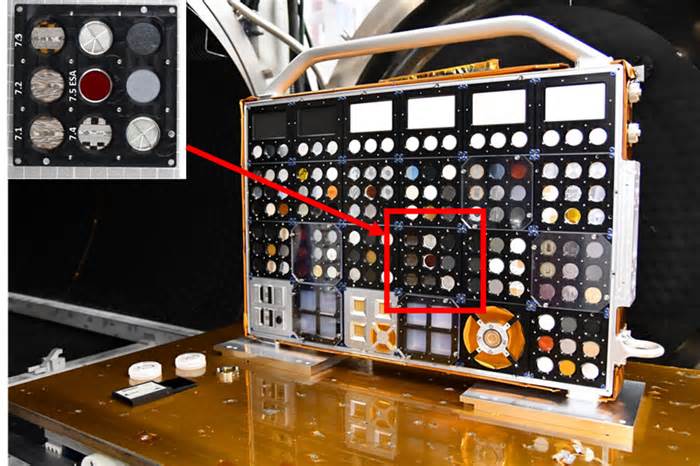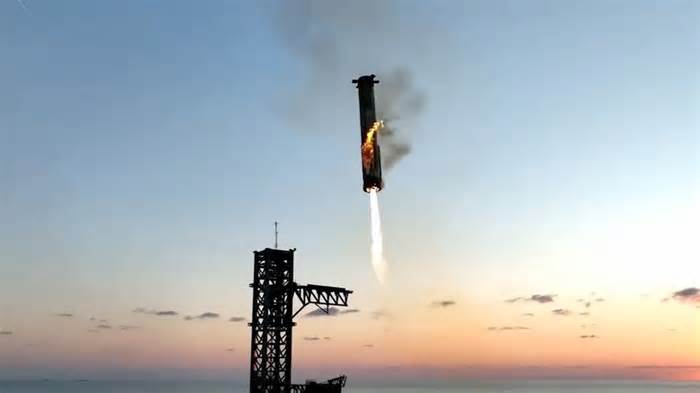
University of Bristol launches composite materials to space for ISS testing
- by CompositesWorld
- Nov 06, 2024
- 0 Comments
- 0 Likes Flag 0 Of 5

Ultra-thin woven fabric enables 90% resource reduction in satellite solar array manufacturing
Preparation of one of the Euro Material Ageing’s experiments for launch. The Comat-designed SESAME module holds specimens selected and tested by the ESA, supplied by 15 international research teams with the University of Bristol samples shown in the inset image. Source | Centre National d’Etudes Spatiales/Comat
Early on Nov. 5th, a new generation of carbon fiber-reinforced composite space materials developed by scientists at the University of Bristol (U.K.) was launched to space via a Space X rocket. The rocket is headed to the International Space Station (ISS), where the materials will undergo testing in the extreme conditions of low Earth orbit to determine their ability to be used to build things like future space stations, spacecraft for interplanetary travel or a new ISS.
The composite materials will be placed on the Bartolomeo platform, located on the front of the ISS, where they will orbit Earth up to 9,000 times over the next 12-18 months at speeds of 17,000 miles per hour. They will need to survive temperatures between -150ºC and +120ºC, space debris traveling seven times faster than a bullet, severe electromagnetic radiation, and high vacuum and atomic oxygen, which erodes even the toughest materials.
Featured Content For related content, read “High glass transition temperature, 100% bio-based thermoset resins for space composites”
Future communities on new planets, for instance, will need protection against galactic cosmic radiation. Dr. Ali Kandemir, senior research associate at the University of Bristol, is one of several Bristol researchers, supported by the UK Space Agency (UKSA), examining the effects of simulated galactic cosmic radiation on the materials in a European Space Agency (ESA) project.
The ISS pictured from the SpaceX Crew Dragon Endeavour during a fly around of the orbiting lab that took place following its undocking from the Harmony module’s space-facing port on Nov. 8, 2021. The red ringed area indicates the likely location of the SESAME module on the Bartolomeo platform. Source | NASA (Dec. 8, 2021), photograph taken by ESA astronaut Thomas Pesquet
“We want materials that are resilient in the space environment and, importantly, materials that can shield humans from that radiation,” says Kandemir. “We also want to make these materials sustainable, so that when they reach the end of their life they can be recycled and used again for the same purpose.”
The launch of the Space X Dragon CRS-2 spacecraft this month is the culmination of 5 years of work for Hamerton and his team. It has included the efforts of early career researchers, postgraduates and several aerospace engineering undergraduates at the University of Bristol, whose final year research projects have been linked to the space materials project.
The support of the University of Bristol-hosted National Composites Centre (NCC, U.K.) was crucial to the scale up of the composite materials. Funding to support the project was supplied by the ESA, the UKSA, Oxford Space Systems and others.
Advertisement
Please first to comment
Related Post
Stay Connected
Tweets by elonmuskTo get the latest tweets please make sure you are logged in on X on this browser.
Sponsored
Popular Post
Tesla: Buy This Dip, Energy Growth And Margin Recovery Are Vastly Underappreciated
28 ViewsJul 29 ,2024






 Energy
Energy



















